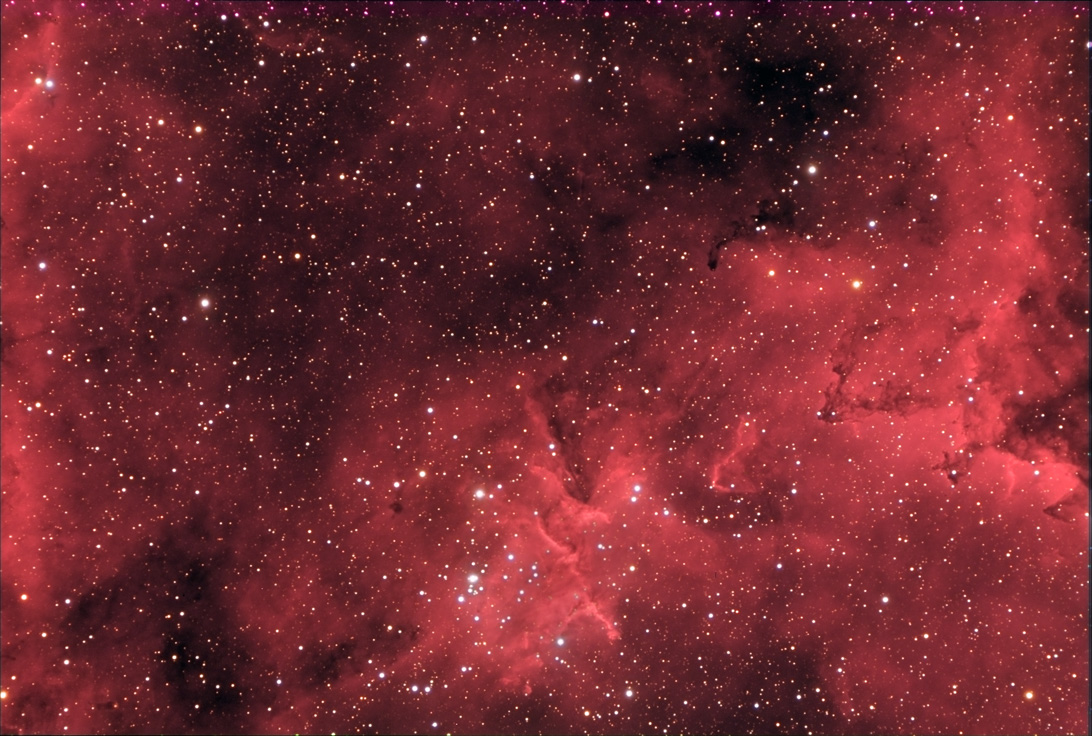Technical Information:
(HaR)RGB: 390:75:75:75 (Luminance layer consists of a blending of thirteen 30-minute images through an Astrodon Ha filter and five 15-minute images through an Astrodon red filter; red channel consisted of a similar, but not identical, blend of the same data; green and blue channels were both five 15-minute images with Astrodon filters. All images unbinned).
Equipment: Astrophysics AP130 refractor without a field flattener, and an SBIG ST-10XME with CFW8 filter wheel (Astrodon filter set), on a Bisque Paramount ME German Equatorial Mount.
Image Acquisition/Camera Control: CCDSoft v5, sometimes controlled with CCDAutoPilot3, and working in concert with TheSky v6.
Processing: All images calibrated (darks and dawn flats) in CCDSoft. All channels combined in Ray Gralak's Sigma pre-beta 11. L, R, G and B layers registered in CCDSoft v5. Color combine, and curves and levels, in Photoshop CS2.
Location: Data acquired remotely from the Tejas Observatory, located on the grounds of New Mexico Skies, near Mayhill, NM (elevation 7300 feet).
Date: Hydrogen alpha images taken during the nights of 12/6/2006; RGB images taken during the night of 12/8/2006.
Pixel scale: 1.67 arcseconds per pixel.
CCD Chip temperature: -25C
Seeing: Generally good.
Transparency: Very good
Moon Phase: Full or almost full moon during imaging

